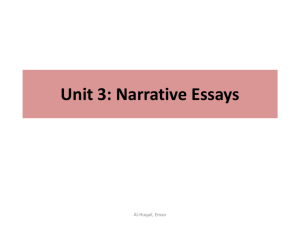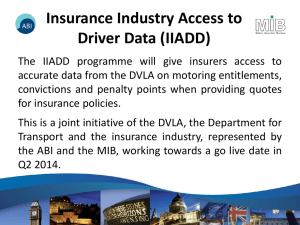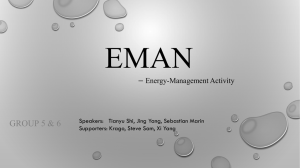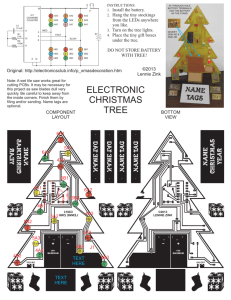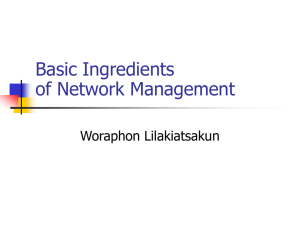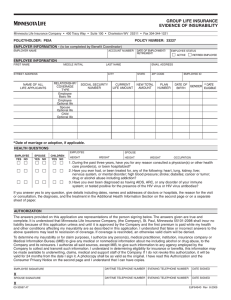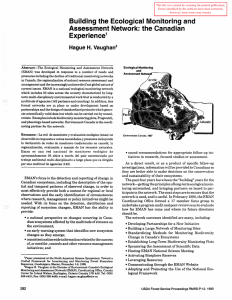Doc 28 ICT&CC Joint Coordination Activity (JCA- ICT&CC) English only
advertisement
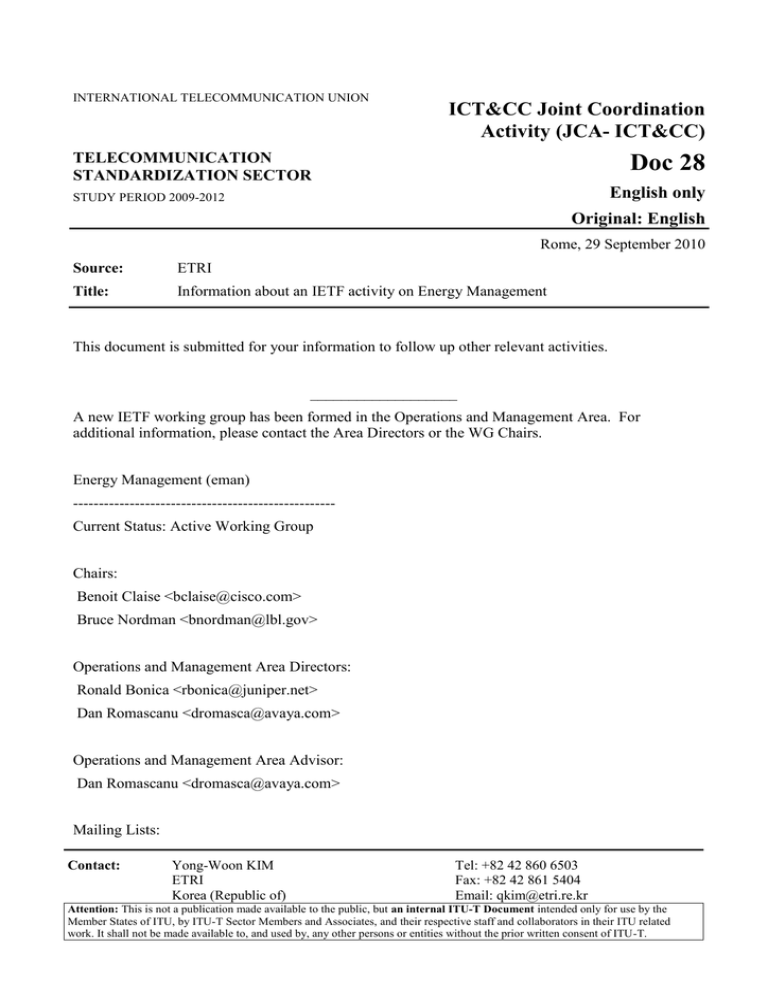
INTERNATIONAL TELECOMMUNICATION UNION ICT&CC Joint Coordination Activity (JCA- ICT&CC) TELECOMMUNICATION STANDARDIZATION SECTOR Doc 28 English only STUDY PERIOD 2009-2012 Original: English Rome, 29 September 2010 Source: ETRI Title: Information about an IETF activity on Energy Management This document is submitted for your information to follow up other relevant activities. ___________________ A new IETF working group has been formed in the Operations and Management Area. For additional information, please contact the Area Directors or the WG Chairs. Energy Management (eman) --------------------------------------------------Current Status: Active Working Group Chairs: Benoit Claise <bclaise@cisco.com> Bruce Nordman <bnordman@lbl.gov> Operations and Management Area Directors: Ronald Bonica <rbonica@juniper.net> Dan Romascanu <dromasca@avaya.com> Operations and Management Area Advisor: Dan Romascanu <dromasca@avaya.com> Mailing Lists: Contact: Yong-Woon KIM ETRI Korea (Republic of) Tel: +82 42 860 6503 Fax: +82 42 861 5404 Email: qkim@etri.re.kr Attention: This is not a publication made available to the public, but an internal ITU-T Document intended only for use by the Member States of ITU, by ITU-T Sector Members and Associates, and their respective staff and collaborators in their ITU related work. It shall not be made available to, and used by, any other persons or entities without the prior written consent of ITU-T. -2General Discussion: eman@ietf.org To subscribe: https://www.ietf.org/mailman/listinfo/eman Archive: http://www.ietf.org/mail-archive/web/eman Description of Working Group Energy management is becoming an additional requirement for network management systems due to several factors including the rising and fluctuating energy costs, the increased awareness of the ecological impact of operating networks and devices, and the regulation of governments on energy consumption and production. The basic objective of energy management is operating communication networks and other equipments with a minimal amount of energy while still providing sufficient performance to meet service level objectives. A discussion of detailed requirements has already started in the OPSAWG, but further exploration in the EMAN WG is needed. Today, most networking and network-attached devices neither monitor nor allow control energy usage as they are mainly instrumented for functions such as fault, configuration, accounting, performance, and security management. These devices are not instrumented to be aware of energy consumption. There are very few means specified in IETF documents for energy management, which includes the areas of power monitoring, energy monitoring, and power state control. The OPSAWG started working on a MIB module for monitoring energy consumption and power states of energy-aware devices and found that more than just a MIB module was needed to manage energy in networks. Rather a new framework for energy management needs to be developed first. A particular difference between energy management and other management tasks is that in some cases energy consumption of a device is not measured at the device itself but reported by a different place. For example, at a Power over Ethernet (PoE) sourcing device or at a smart power strip, in which cases one device is effectively metering another remote device. This requires a clear definition of the relationship between the reporting devices and identification of remote devices for which monitoring information is provided. Similar considerations will apply to power state control of remote devices, for example, at a PoE sourcing device that switches on and off power at its ports. Another example scenario for energy management is a gateway to low resourced and lossy network devices in wireless a building network. Here the energy management system talks directly to the gateway but not necessarily to other devices in the building network. The WG will investigate existing standards such as those from the IEC, ANSI, DMTF and others, and reuse existing work as much as possible. The EMAN WG will work on the management of energy-aware devices, Covered by the following items: 1. Requirements for energy management. The EMAN WG will develop a requirements document that will specify energy management properties that will allow networks and devices to become energy aware. In addition to energy awareness requirements, the need for control functions will be discussed. Specifically the need to monitor and control properties of devices that are remote to the reporting device should be discussed. 2. Energy management framework. -3The EMAN WG will create a framework document that will describe extensions to current management framework, required for energy management. This includes: power and energy monitoring, power states, power state control, and potential power state transitions. The framework will focus on energy management for IP-based network equipment (routers, switches, PCs, IP cameras, phones and the like). Particularly, the relationships between reporting devices, remote devices, and monitoring probes (such as might be used in low-power and lossy networks) need to be elaborated. For the case of a device reporting on behalf of other devices and controlling those devices, the framework will address the issues of discovery and identification of remote devices. 3. Energy-aware Networks and Devices MIB document The EMAN WG will develop a MIB module for monitoring energy-aware networks and devices. The module will address devices identification, context information, and potential relationship between reporting devices, remote devices, and monitoring probes. 4. Power and Energy Monitoring MIB document The EMAN WG will develop a document defining managed objects for monitoring of power states and energy consumption/production. The monitoring of power states includes: retrieving power states, properties of power states, current power state, power state transitions, and power state statistics. The managed objects will provide means for reporting detailed properties of the actual energy rate (power) and of accumulated energy. Further, it will provide information on electrical power quality. 5. Battery MIB document The EMAN WG will develop a document defining managed objects for battery monitoring, which will provide means for reporting detailed properties of the actual charge, age, and state of a battery and of battery statistics. 6. Applicability statement The EMAN WG will develop an applicability statement, describing the variety of applications that can use the energy framework and associated MIB modules. Potential examples are building networks, home energy gateway, etc. Finally, the document will also discuss relationships of the framework to other architectures and frameworks (such as smartgrid). The applicability statement will explain the relationship between the work in this WG and the other existing standards such as those from the IEC, ANSI, DMTF, and others. Goals and Milestones Dec 2010 Publish Internet draft on Energy Management Requirements Dec 2010 Publish Internet draft on Energy Management Framework Dec 2010 Publish Internet draft on Energy-aware Networks and Devices MIB Dec 2010 Publish Internet draft on Power and Energy Monitoring MIB -4Dec 2010 Publish Internet draft on Battery MIB Apr 2011 Publish Internet draft on Energy Management Applicability May 2011 Submit Internet draft on Energy Management Requirements for publication as Informational RFC Sep 2011 Submit Internet draft on Energy Management Framework for publication as Informational RFC Sep 2011 Submit Internet draft on Energy-aware Networks and Devices MIB for publication as Standard Track RFC Sep 2011 Submit Internet draft on Power and Energy Monitoring MIB for publication as Standard Track RFC Sep 2011 Submit Internet draft on Battery MIB forpublication as Standard Track RFC Dec 2011 Submit Internet draft on Energy Management Applicability for publication as Informational RFC _____________________________
